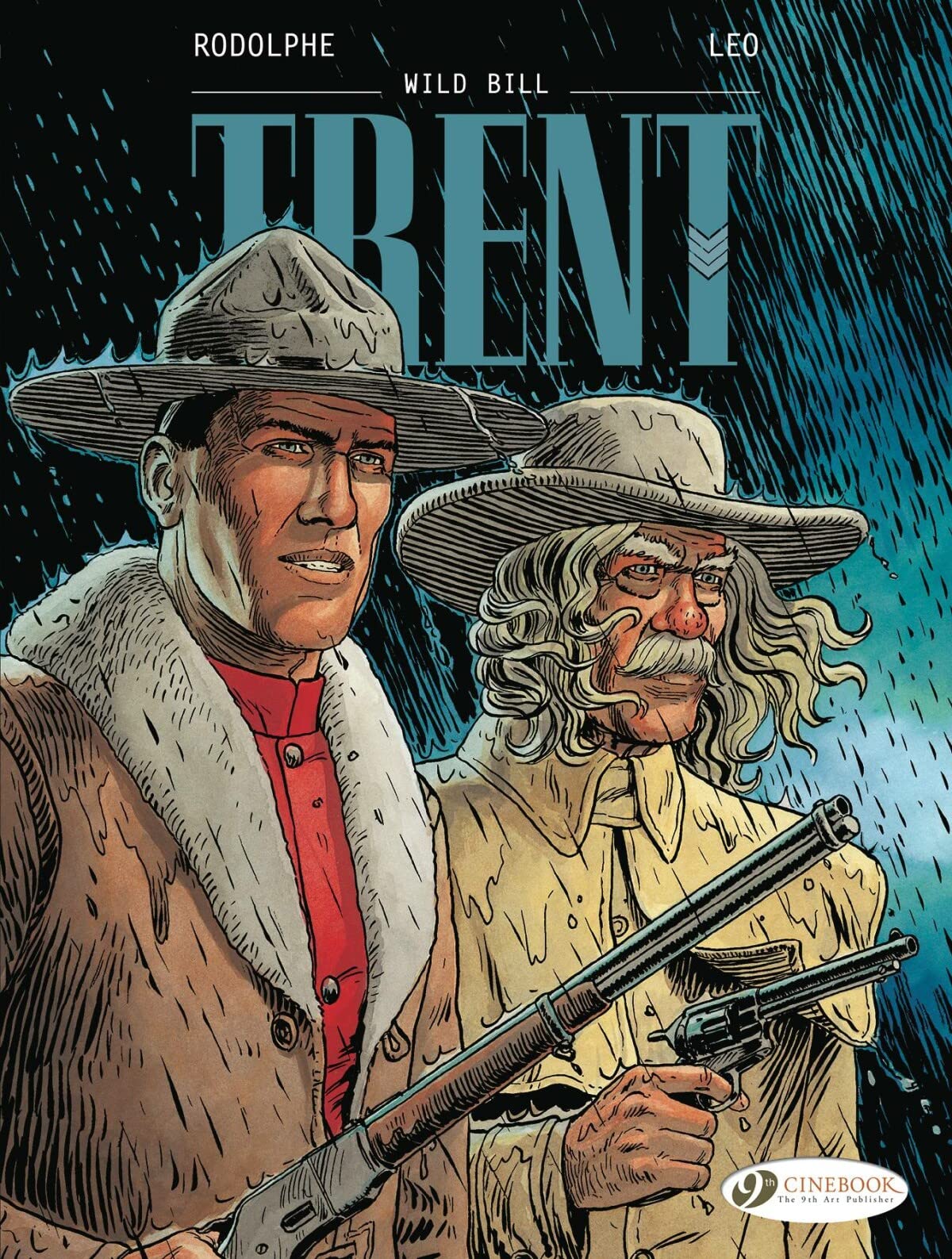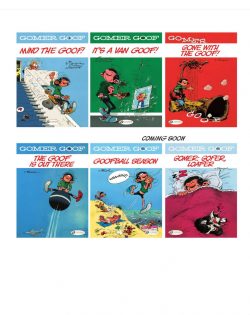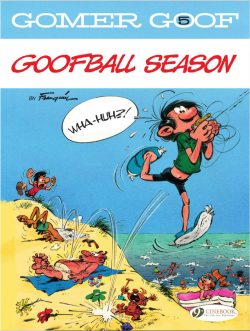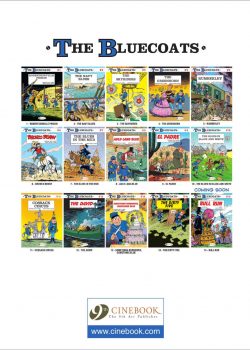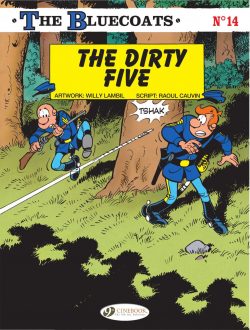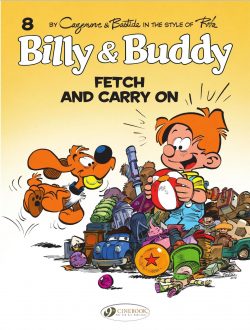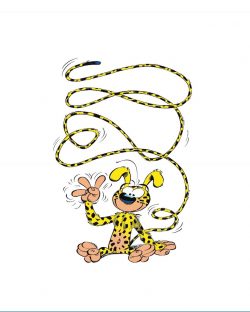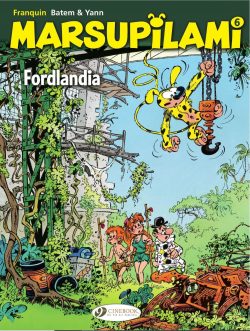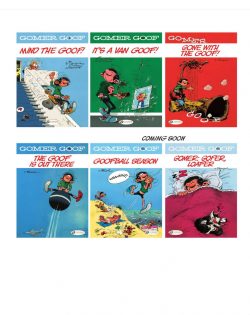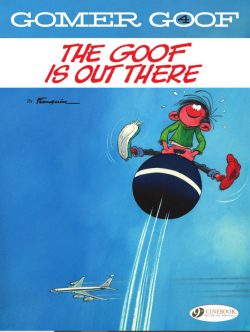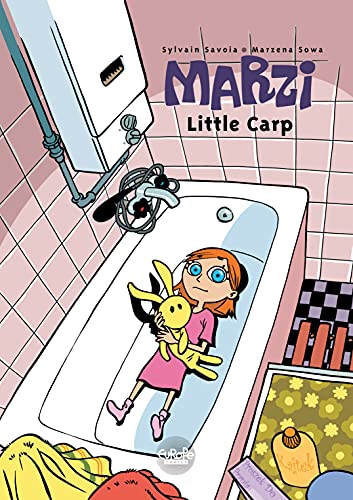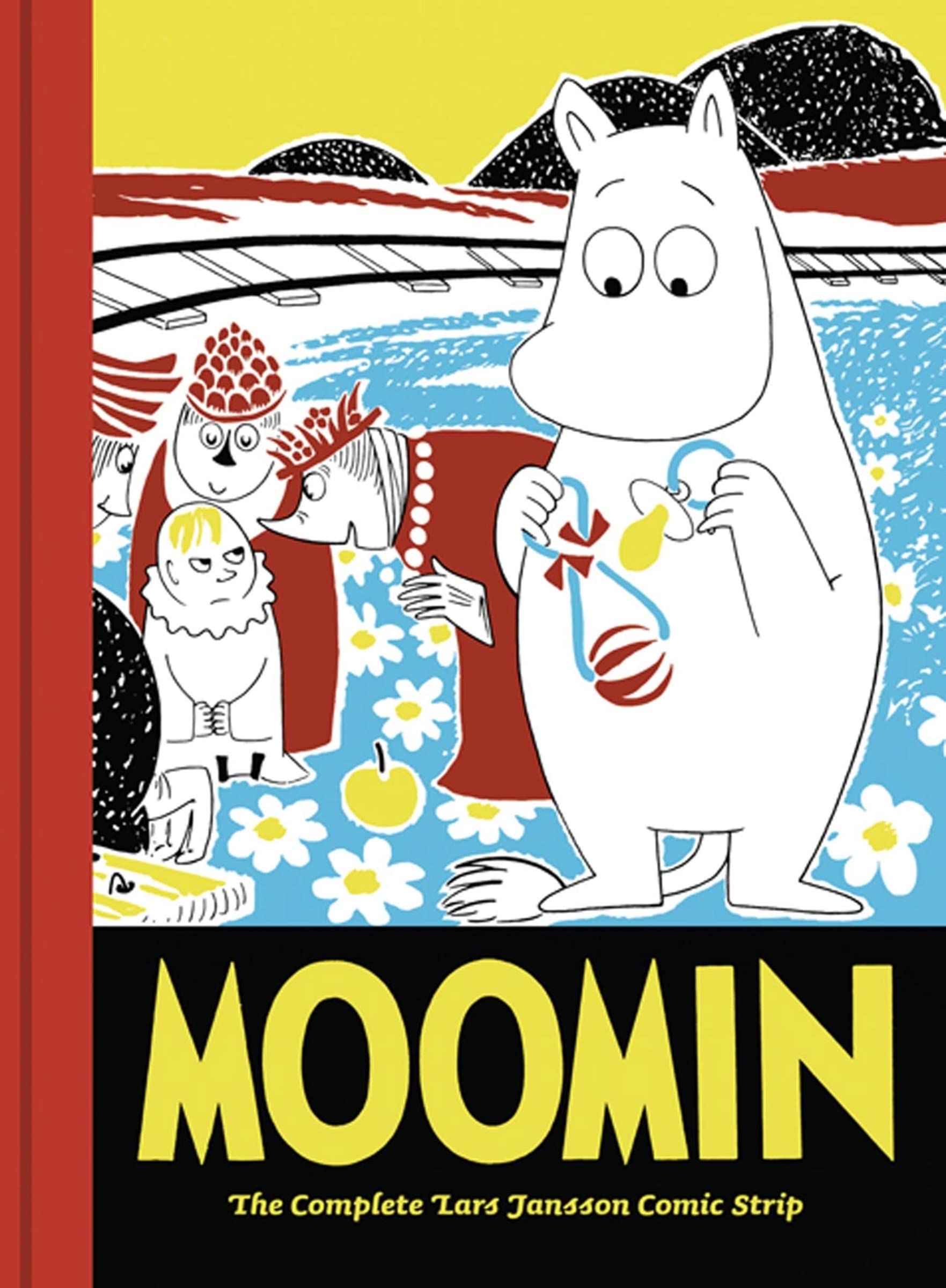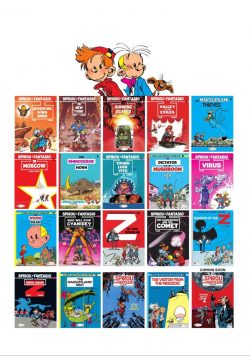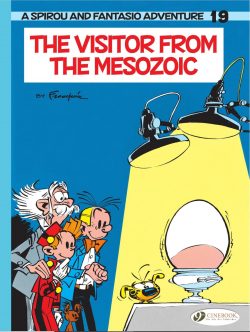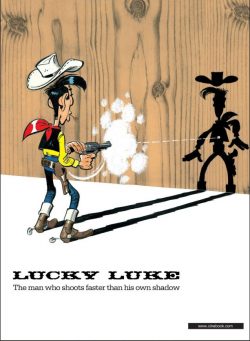
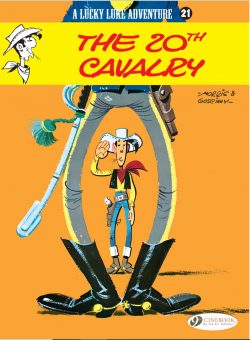
By Morris & Goscinny, translated by Jerome Saincantin (Cinebook)
ISBN: 978-1-84918-016-0 (PB Album/Digital edition)
Doughty, dashing and dependable cowboy “good guy” Lucky Luke is a rangy, implacably even-tempered do-gooder able to “draw faster than his own shadow”. He amiably ambles around the mythic Old West, having light-hearted adventures on his petulant and somewhat sarcastic wonder-horse Jolly Jumper.
The taciturn trailblazer regularly interacts with historical and legendary figures as well as even odder fictional folk in tales drawn from key themes of classic cowboy films – as well as some uniquely European notions, and interpretations…
Over decades, his exploits have made him one of the top-ranking comic characters in the world, generating upwards of 85 individual albums (excluding the many spin-off series) with sales totalling in excess of 300 million in 30 languages thus far. That renown has led to a mountain of merchandise, aforementioned tie-in series like Kid Lucky and Ran-Tan-Plan), plus toys, computer games, animated cartoons, a plethora of TV shows and live-action movies and even commemorative exhibitions.
No theme park yet, but you never know…
The brainchild of Belgian animator, illustrator and cartoonist Maurice de Bévère (“Morris”) and first officially seen in Le Journal de Spirou’s seasonal Annual L’Almanach Spirou 1947, Luke sprang to laconic life in 1946, before inevitably ambling into his first weekly adventure ‘Arizona 1880’ on December 7th 1946.
Working solo until 1955, Morris produced nine albums of affectionate sagebrush spoofery before teaming with old pal and fellow trans-American tourist Rene Goscinny. When Rene became his regular wordsmith, Luke attained dizzying, legendary, heights starting with Des rails sur la Prairie (Rails on the Prairie) which began serialisation on August 25th 1955. In 1967, the six-gun straight-shooter switched sides, joining Goscinny’s own magazine Pilote for La Diligence (The Stagecoach).
Goscinny co-created 45 albums with Morris before his untimely death, whereupon Morris soldiered on both singly and with other collaborators. He died in 2001, having drawn fully 70 adventures, plus numerous sidebar sagebrush sagas crafted with Achdé, Laurent Gerra, Benacquista & Pennac, Xavier Fauche, Jean Léturgie, Jacques Pessis and more, all taking their own shot at the venerable vigilante…
Lucky Luke has history in Britain too, having first pseudonymously amused and enthralled young readers during the late 1950s, syndicated to weekly anthology Film Fun. He later rode back into comics-town in 1967 for comedy paper Giggle, using nom de plume Buck Bingo.
Morris & Goscinny’s 18th coproduction, Le Vingtième (or Le 20ème) de cavalerie was originally serialised in Le Journal de Spirou #1356-1377 before becoming the 27th album release in 1965. It’s a wickedly barbed spoof of Hollywood’s output (especially John Ford’s Cavalry Trilogy) in regard to Western soldiering and its often decidedly one-sided view of the US’s Indian wars. If you’re a fan of those flicks, you’ll see caricatures of plenty of favourite stars such as Randolph Scott and Victor McClaglen…
The plot is one you’ll know – by cultural osmosis – if not actual repeated viewings as, deep in Wyoming territory, Chief Yellow Dog’s recent treaty signing with representatives has led to confusion, hostility and potential bloodshed. The stated commitments involved white settlers passing through unmolested in return for not killing all the buffalo, but that’s suddenly stopped happening, leaving Fort Cheyenne’s garrison and particularly commander Colonel McStraggle in dire straits and quite a quandary…
With settlers prevented from crossing Indian land, tensions are mounting and in Washington DC the movers and shakers once again request the aid of a seasoned, unbiased and seemingly infallible troubleshooter…
By-the-book warrior Colonel McStraggle is proud of his achievements with the 20th Cavalry regiment, but is also a stickler for protocol and the “Army way”. He is not keen on the new “scout” foisted upon him, but is even less happy with the appalling progress of his son Grover – a lowly trooper who must prove his worthiness on a daily – if not hourly – basis with dear old dad micromanaging every moment…
Along with a typically quotidian cast including savvy Chinese laundryman Ming Foo, a fanatical old Irish sergeant and a Greek chorus of complaining soldiers who have seen it all before, more unusual if temporary occupants of Fort Cheyenne include stranded and obnoxious hat maker Jeremiah Bowler…
Tempers are simmering everywhere, but the biggest problem Lucky can see is that somebody is supplying the Indians with guns and booze. When he visits the angry natives and meets proudly villainous deserter Derek Flood, our hero realises that just stopping the renegade won’t end the crisis. The old leader is even being pushed into war by his own braves and fellow/rival chiefs Crazy Coyote of the Sioux and Sick Eagle of the Arapaho.
The real problem is that – apart from McStraggle and Yellow Dog – everyone apparently wants a fight and won’t back down until they get one…
When the two leaders finally agree to parley, the ceremony is sabotaged and the Chief arrested over Lucky’s protests.
Now it’s time for the time-honoured siege of the fort, and desperate ride for reinforcements and horrendous slaughter unless Luke can change the script in time…
A deliciously wry and loving homage to classical western cinema, The 20th Cavalry revels in its classic set-piece slapstick and witty wordplay: poking gentle fun at the fundamental components of the genre and successfully blending tradition with action to deliver a major victory for fun…
Here is another wildly entertaining all-ages confection by unparalleled comics masters, affording an enticing glimpse into a unique genre for today’s readers who might well have missed the romantic allure of an all-pervasive Wild West that never was…
© Dargaud Editeur Paris 1971 by Goscinny & Morris. © Lucky Comics. English translation © 2009 Cinebook Ltd.

